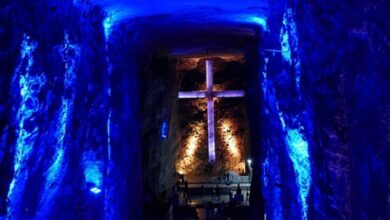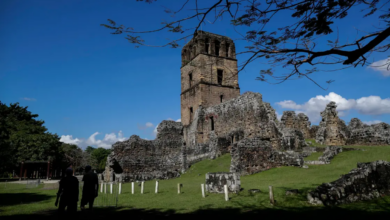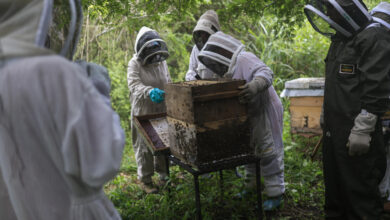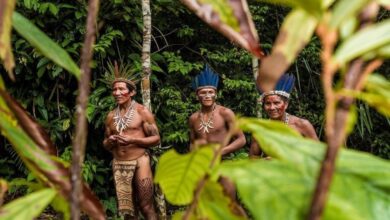When the Rain Speaks Louder Than the State: Panama’s Forgotten Children of Ngäbe-Buglé
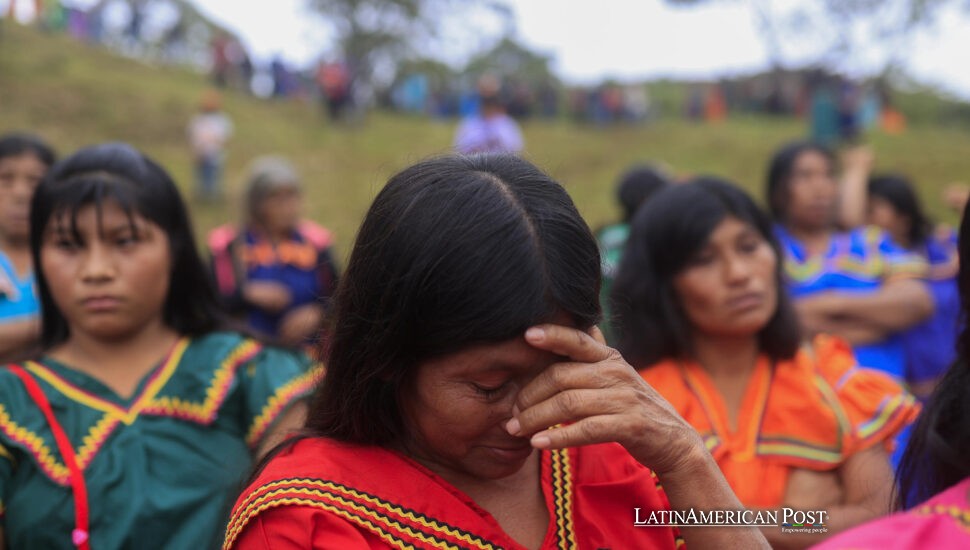
High in Panama’s western mountains, where clouds cling to the ridges and the radio signal fades long before the asphalt does, two small white coffins were carried through the mud. The mourners spoke softly in Ngäbe, their words swallowed by rain. Inside the coffins lay Melanie and Kimberlin, ages five and eight, swept away by a sudden torrent that turned a narrow trail into a deadly river. Their story has shaken a nation that rarely looks toward the Comarca Ngäbe-Buglé—a region that floods long before help arrives.
When the Rain Speaks Louder Than the State
The storm that killed the two girls was no act of God alone. It was the tail of Hurricane Melissa, intensified by days of heavy rain. On that morning, Melanie and Kimberlin were walking home along a steep trail that cuts through the mountains of Cascabel, one of the most isolated villages in the comarca. Five children were crossing a swollen creek when a wall of brown water struck. Only three survived.
The teacher Rodrigo Alfredo Gaitán still remembers the sound. “The creek carried five—three girls and two boys—but three were saved,” he told EFE, his voice breaking. He carried one of the small bodies up the hill to her grandmother’s house on his shoulders. “She was already cold… I could feel the water in her stomach, and without being a doctor, I dare say some bones were cracking.” He paused. “That image will never leave me.”
Gaitán has taught in the comarca for four years, though he comes from elsewhere. His classroom walls are made of wood planks, and the floor is dirt. “When it rains, we get more water inside than outside,” he said, pointing to the holes in the roof. The school was built in 1977. Nearly half a century later, little has changed except the number of graves.
Two Panamas—One City, One Forgotten
The official ceremony that followed was held in Spanish. But on the muddy walk to the cemetery, the parents wept in Ngäbe, their own tongue. Among the mourners was Salomé Montezuma, cacique of the Mironó district. He told EFE, “We are under the umbrella of the Republic of Panama, but there are two Panamas: one for the city and one for the comarca. What happens here is always forgotten.“
He is not exaggerating. In these mountains, children walk for hours along rain-slick trails to reach the district’s only school. During the wet season, rivers rise without warning, bridges wash away, and families tie ropes between trees to cross the current. When tragedy strikes, aid comes late and promises come early.
The 2023 census estimates that Indigenous peoples make up 17.2% of Panama’s population, yet they endure the nation’s most profound poverty. In Ngäbe-Buglé, more than 87% of the population lives below the poverty line. Infrastructure is scarce, jobs rarer still. In these hills, the government is an abstraction—a distant voice on a distant radio. A single storm can erase a classroom or a generation.
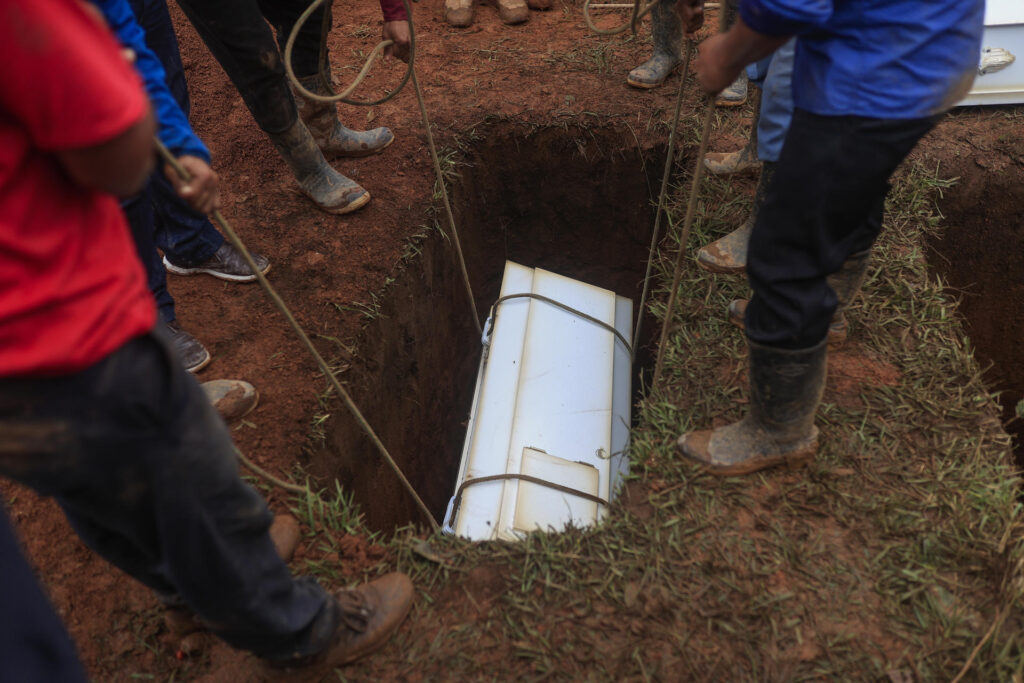
The Structural Weight of Neglect
When Melanie’s father collapsed beside her open coffin, he spoke with the clarity grief can bring. “It’s not just my daughter who crossed that river, but many students. They travel two hours to school. If this isn’t fixed, which authority will?” His question cut through the ceremony like thunder.
In truth, the disaster had been mapped long before the storm: trails without bridges, classrooms without floors, communities without drainage or road access. The geography of risk is written in policy omissions. Every rainfall is a referendum on the state’s absence.
President José Raúl Mulino offered condolences and announced an $85 million public works plan for the Indigenous territories, including more than one hundred footbridges. But in the comarca, promises are measured against funerals. “Each bridge starts with tears,” a local teacher murmured. The phrase could serve as the region’s anthem.
Because the tragedy wasn’t born in the storm—it was born in half a century of uneven development, where the national conversation about progress barely reaches the mountains. For the children of Cascabel, a typical school day is a three-hour hike through mud and across rivers without bridges to a classroom that leaks when it rains. The danger is routine. The grief is predictable.
The Lost Children of Two Terrains
Melanie and Kimberlin’s drowning is not an isolated heartbreak. NGOs have recorded dozens of similar child deaths in Ngäbe-Buglé over the past 25 years—lives ended not by adventure or recklessness, but by the simple act of trying to get an education. Their funerals, like so many before, passed broken bridges and flooded paths. Wooden homes leaned into the wind, tin roofs clattered. Yet in that procession, the community found a voice.
They carried the girls not only as victims of a storm but as symbols of a country divided by terrain and indifference. In Panama City, skyscrapers climb higher each year; in the comarca, children wade through rivers to reach a chalkboard. The government counts GDP. Parents count the steps between life and the next crossing.
The mourners’ cries in Ngäbe rose above the rain—part prayer, part indictment. Their language, often absent from official ceremonies, filled the hills. They weren’t just burying two girls; they were burying the illusion that neglect is accidental.
As one teacher said, standing ankle-deep in mud, “We’re all children of the same creator—but not of the same country.“
A Country’s Test: Who Protects the Return Home?
The healing journey will require more than condolences. It will mean treating the Indigenous highlands not as margins but as the country’s moral center. Building bridges, yes, but also building trust. Ensuring that schools have floors, clinics have doctors, and that Ngäbe voices are not background noise in policy meetings.
The question that lingers in Cascabel is simple: if the state cannot guarantee a safe passage from home to school, can it claim to protect its children at all?
The rain has quieted now. The hills are green again, the creek a thin silver thread. Beneath that soil rest two girls who tried to come home. Their names—Melanie and Kimberlin—have become shorthand for a promise Panama has yet to keep.
The next storm will come. The test is whether the country will still meet it with shovels and speeches—or finally with roads, bridges, and the will to reach the places where its children walk alone.
Also Read: Jayuya at 75: Puerto Rico’s Unfinished Revolution and the Memory That Refuses to Fade

